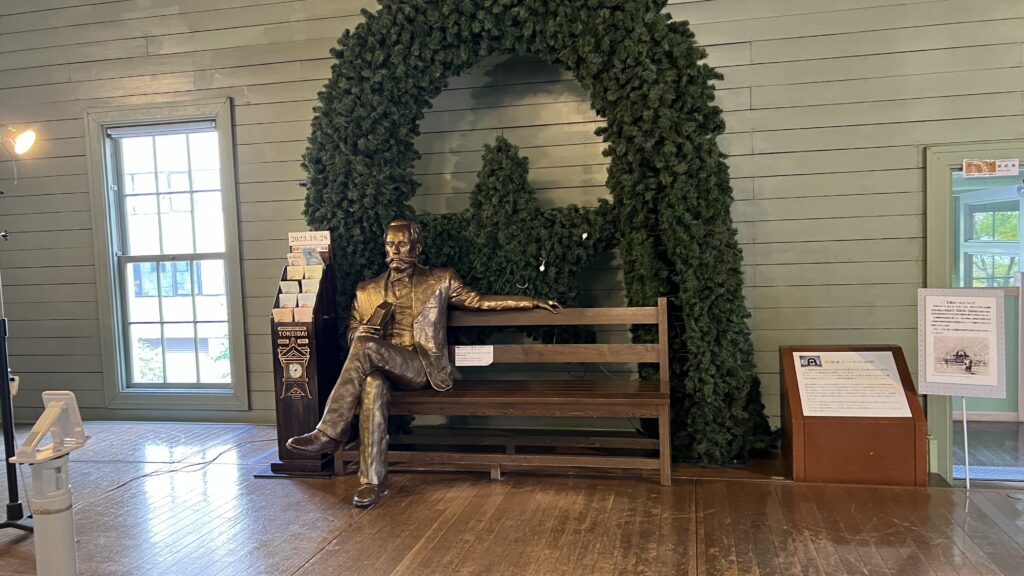History
The Sapporo Clock Tower: A Timeless Witness to Sapporo’s History
For over 130 years since its construction, the Sapporo Clock Tower has stood in the heart of the city, watching over the growth of Sapporo and the changes in its citizens’ lives.
Formal Name: Former Sapporo Agricultural College Drill Hall

The Sapporo Agricultural College, the predecessor of Hokkaido University, was established in 1876 (Meiji 9) to train leaders for the development of Hokkaido. The Drill Hall, later known as the Clock Tower, was built in 1878 (Meiji 11) following the recommendation of Dr. William S. Clark. It served as the central hall for military training, entrance and graduation ceremonies, and other college events.
The Development of Hokkaido and the Construction of the Agricultural College
In 1869 (Meiji 2), shortly after the Meiji Restoration, the Meiji government established the Kaitakushi (Hokkaido Development Commission) to oversee the large-scale development of Hokkaido and the planning of Sapporo. In 1871 (Meiji 4), Kuroda Kiyotaka, the Vice Minister of the Kaitakushi, traveled to Europe and the United States to seek models for development. He invited Horace Capron, the U.S. Secretary of Agriculture, to Japan as an advisor.

Capron arrived in July 1871 with a team of experts, offering guidance on agriculture, industry, and urban development. His proposals included cultivating crops, promoting dairy farming and fisheries, and introducing Western-style buildings and industries. These initiatives laid the foundation for modern Hokkaido.

Capron also stressed the importance of establishing an educational institution to train leaders for Hokkaido’s development. Based on his advice, Kuroda proposed the creation of a higher education facility in Sapporo and the recruitment of Western educators to teach advanced knowledge and techniques. This led to the opening of the Sapporo Agricultural College in 1876, with Dr. William S. Clark and his colleagues as the first faculty members.
The Vision of the Drill Hall
Following the Meiji government’s policy of combining military and agricultural training (兵農一如), Dr. Clark introduced military training at the college. The goal was to prepare students to act as leaders for the Kaitakushi militia while also strengthening their physical capabilities for the challenges of development. Dr. Clark proposed the construction of a Military Hall (later the Drill Hall) to serve as a facility for this training.
The Drill Hall was constructed under the supervision of the second vice-principal, William Wheeler, and designed by Yoshiyuki Adachi, a chief architect of the Kaitakushi. Completed on October 16, 1878, the building featured classrooms, research rooms, and exhibition halls on the first floor, while the second floor housed the drill hall for training, ceremonies, and events.
The Clock Tower Installation
Originally, the Drill Hall did not have a clock tower. A small belfry on the roof signaled the start and end of classes. After attending the hall’s completion ceremony, Kuroda Kiyotaka, then the head of the Kaitakushi, proposed installing a clock tower. In 1878, Wheeler ordered a clock mechanism from the E. Howard & Co. in New York. The clock arrived in Sapporo in mid-1879, but its unexpected size required significant renovations to the building.
Despite initial discussions of installing the clock in other locations, Wheeler successfully argued for placing it on the Drill Hall to serve as Sapporo’s standard time. The clock began operating on August 12, 1881, marking the hours with its clear chimes and becoming an essential timepiece for the city.
The Clock Tower and Its Role in Citizen Life

After the Agricultural College relocated in 1903, the Drill Hall was leased to the Sapporo Ward. Around this time, it became commonly known as the Clock Tower. In 1906, the hall was purchased by Sapporo Ward and moved approximately 100 meters south to its current location.

From 1911 to 1966, excluding the wartime years, the Clock Tower served as a library, community center, and venue for lectures on literature, politics, economics, and science. In 1963, the preamble to Sapporo’s civic charter declared: “We are the citizens of Sapporo, where the clock tower chimes.” Since then, the Clock Tower has been cherished as both a symbol of Sapporo and a source of pride for its residents.








